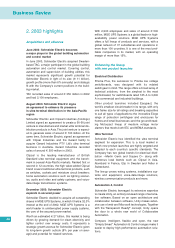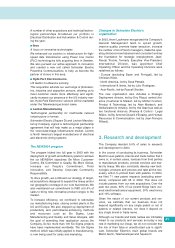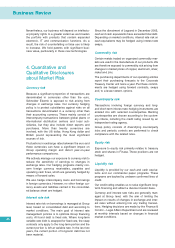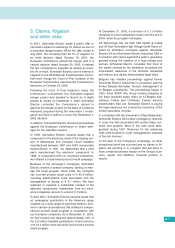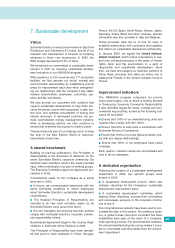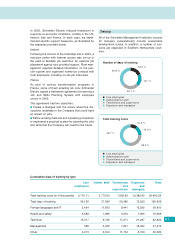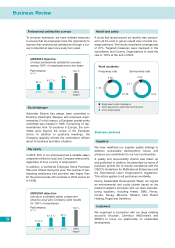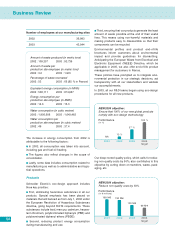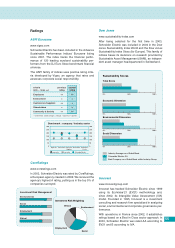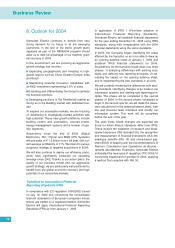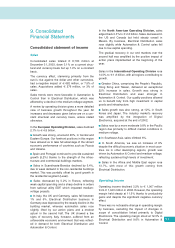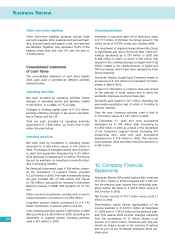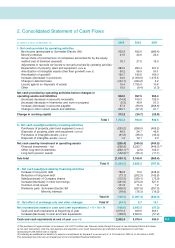APC 2003 Annual Report Download - page 56
Download and view the complete annual report
Please find page 56 of the 2003 APC annual report below. You can navigate through the pages in the report by either clicking on the pages listed below, or by using the keyword search tool below to find specific information within the annual report.
Business Review
54
13 %
57 %
100 %
Performance
NEW2004 objective:
Ensure that 100% of our new global products
comply with eco-design methodology
(in %)
NA
2001 2002 20032004
target
190 M
130 M
99 M
Performance
NEW2004 objective:
Reduce non-quality costs by 50%
(in millions)
198 M
2001 2002 20032004
target
■Third, ensuring that our products generate the least
amount of waste possible at the end of their useful
lives. This means using non-harmful materials and
making products easy to disassemble so that their
components can be recycled.
Environmental profiles and product end-of-life
brochures inform customers about environmental
impact and provide guidelines for dismantling.
Anticipating the European Waste from Electrical and
Electronic Equipment (WEEE) Directive, which be
applicable in 2005, we also offer end-of-life product
management for customers in France.
These policies have prompted us to integrate envi-
ronmental protection in our strategic decisions, act
transparently with all our stakeholders and validate
our accomplishments.
In 2003, all our R&D teams began using eco-design
procedures for all new products.
Our deep-rooted quality policy, which calls for reduc-
ing non-quality costs by 50%, also contributes to this
objective by cutting down on transfers, waste, pack-
aging, etc.
Amount of waste produced (in metric tons)
2002 : 109,357 2003 : 93,736
Amount of waste per
production site employee (in metric tons)
2002 : 3.0 2003 : 1.901
Percentage of waste recovered
2002 : 53 2003 : 65 (85 % in France)
Equivalent energy consumption (in MWh)
2002 : 538,111 2003 : 674,967
Energy consumption per
production site employee (in MWh)
2002 : 14.6 2003 : 15.3
Water consumption (in cubic meters)
2002 : 1,805,608 2003 : 1,643,483
Water consumption per
production site employee (in cubic meters)
2002 : 49 2003 : 37.4
The increase in energy consumption from 2002 is
attributable to the following factors:
■In 2003, all consumption was taken into account,
including gas and fuel-oil heating.
■The figures also reflect changes in the scope of
consolidation.
■Lastly, some data includes consumption related to
manufacturing as well as to administrative and logis-
tical operations.
Products
Schneider Electric’s eco-design approach includes
three key priorities:
■First, eliminating hazardous substances in all our
products. Special emphasis has been placed on
materials that will banned as from July 1, 2006 under
the European Restriction of Hazardous Substances
directive, going beyond RoHS requirements. These
substances include lead, mercury, cadmium, hexava-
lent chromium, polybrominated biphenyls (PBB) and
polybrominated diphenyl ethers (PBDE).
■Second, reducing product energy consumption
during manufacturing and use.
Number of employees at our manufacturing sites
2002 36,983
2003 43,944


